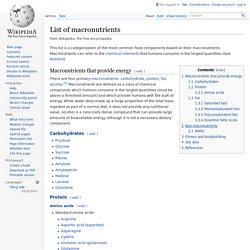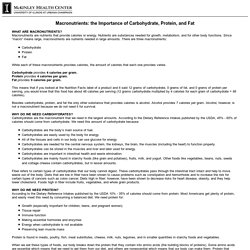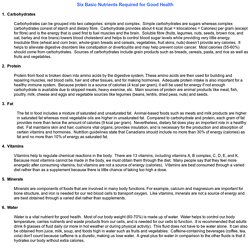

Effect of dietary protein content on weight gain, energy expenditure, and body composition during overeating: a randomized controlled trial. El falso pan que nos enferma. El pan que se consume en la actualidad no tiene nada que ver con el valor nutricional del que fue el símbolo del alimento por excelencia.

En el proceso de refinamiento de la harina de trigo, al retirarse el germen y el salvado, el pan pierde casi todas sus proteínas, grasas, vitaminas y minerales.El pan que se ingiere en la actualidad es un engrudo de almidón que NO NUTRE SINO QUE NOS SOBRECARGA DE CALORIAS VACIAS Y CONDUCE A LA OBESIDAD Y LA DESMINERALIZACION. ¿Quién no sabe que el pan blanco produce estreñimiento?
Lo que no todo el mundo sabe es que además está directamente implicado en otras muchas enfermedades entre las cuales podemos citar: ObesidadCáncer de colonDesmineralización (osteoporosis, artrosis, etc.)HemorroidesColesterolDiverticulosisEntre otras afecciones. El pan es conocido desde antes de que apareciese nuestra civilización.
Un grano de trigo está compuesto por tres partes: el germen de trigo donde está todo el verdadero valor nutritivo, el salvado y el endosperma. 3 Ways to Convert Grams to Calories. List of macronutrients. This list is a categorization of the most common food components based on their macronutrients.

Macronutrients can refer to the chemical elements that humans consume in the largest quantities (See Nutrient) Macronutrients that provide energy[edit] Carbohydrates[edit] Protein[edit] Amino acids[edit] Fat[edit] Saturated fats[edit] Monounsaturated fats[edit] Polyunsaturated fats[edit] Essential fatty acids[edit] These 2 essential fatty acids are the starting point for other important omega-acids (e.g. Non-macronutrients[edit] Water[edit] Water is perhaps the most important substance for life on Earth. Fitness and bodybuilding[edit] In sports, fitness and bodybuilding the term Macros is used extensively to refer to proteins, carbs and fats. McKinley Health Center - Macronutrients: the Importance of Carbohydrate, Protein, and Fat - University of Illinois.
WHAT ARE MACRONUTRIENTS?

Macronutrients are nutrients that provide calories or energy. Nutrients are substances needed for growth, metabolism, and for other body functions. Since “macro” means large, macronutrients are nutrients needed in large amounts. There are three macronutrients: Carbohydrate Protein Fat While each of these macronutrients provides calories, the amount of calories that each one provides varies. Carbohydrate provides 4 calories per gram. Six Basic Nutrients and Their Functions. There are six classes of essential nutrients necessary for human survival: carbohydrates, proteins, lipids, vitamins, minerals and water.

The best way to get these nutrients is by following a varied, healthy diet featuring plenty of fresh vegetables and fruits, whole grains, lean proteins, nonfat dairy products and healthy fats. Dietary requirements vary with age and sex. Consult your physician or a registered dietitian about the diet that is best for you. Carbohydrates are a major energy source. Along with providing fuel for physical activity, they also power the body's involuntary functions, including heartbeat, breathing and digestive processes.
Skin, muscle and bones depend on dietary protein for normal growth, development and maintenance. You may think of lipids, or fats, as dietary enemies, but they are as necessary to the body's normal functioning as the other essential nutrients. Vitamins are micronutrients, meaning the body needs them in small quantities. Six Basic Nutrients Required for Good Health. 1.

Carbohydrates Carbohydrates can be grouped into two categories: simple and complex. Simple carbohydrates are sugars whereas complex carbohydrates consist of starch and dietary fibre. Carbohydrate provides about 4 kcal (kcal = kilocalories = Calories) per gram (except for fibre) and is the energy that is used first to fuel muscles and the brain. Soluble fibre (fruits, legumes, nuts, seeds, brown rice, and oat, barley and rice brans) lowers blood cholesterol and helps to control blood sugar levels while providing very little energy. 2. Protein from food is broken down into amino acids by the digestive system. 3. The fat in food includes a mixture of saturated and unsaturated fat. 4. Vitamins help to regulate chemical reactions in the body.